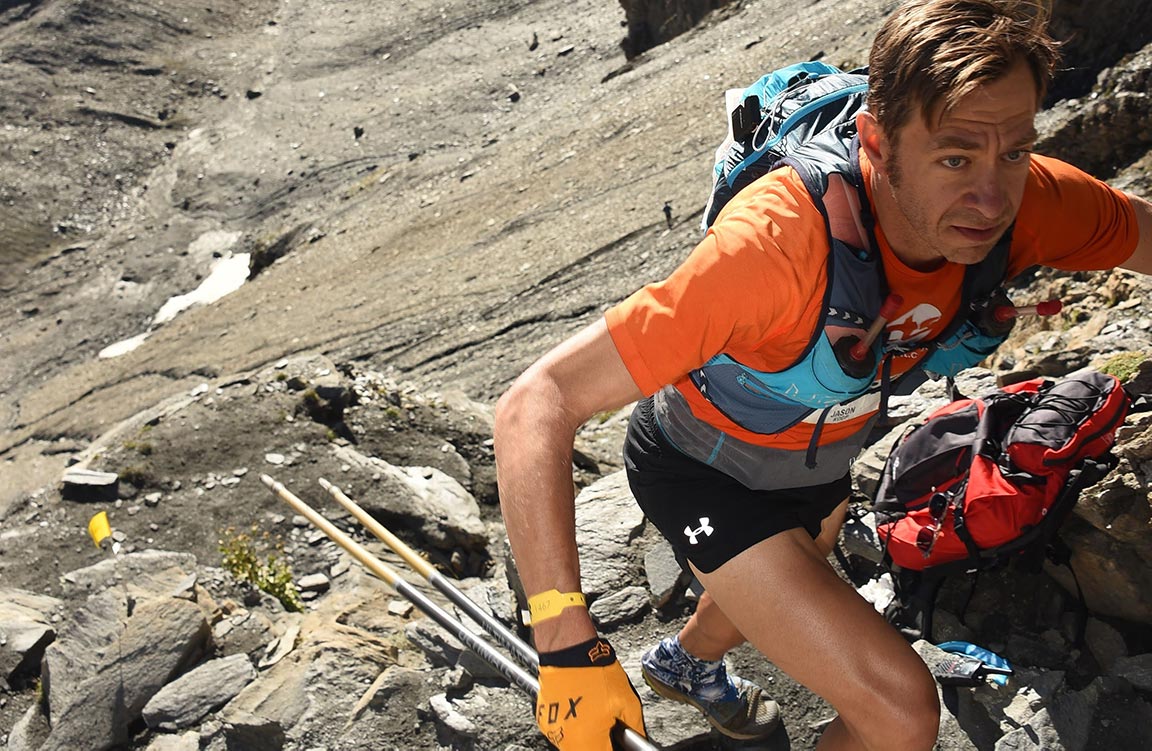
Using the ADAPT Method for Overcoming Adversity
Ultrarunning is a sport built on adversity. Extreme distances, fickle weather and countless other hurdles will seemingly coordinate and conspire in the universe’s cruel attempt to throw you off of your game. Yet, we are a triumphant lot. Whether it is Killian Jornet winning the Hardrock 100 in an arm sling after dislocating his shoulder, or a mere mortal fighting to beat a cutoff after taking a wrong turn, the annals of ultrarunning are littered with fables of tragic missteps unfolding into ultimate triumph.
In Training Essentials for Ultrarunning, I introduced a concept for ultrarunners when faced with said adversity. ADAPT is an acronym I developed to give ultarunners a step-by-step framework for dealing with adversity on the trail. It is not a novel concept. Entities from the Boy Scouts to branches of the military developed analogs far before I started coaching. Over the past year athletes have utilized the ADAPT principles over and over as they’ve dealt with cancelled races, travel restrictions, work-from-home mandates, and more. Now that it appears we’re cautiously returning to running races, this is a good time for a refresher on how to deal with adversity on the trail.
ACCEPT
When shit hits the fan, before you take another step, simply pause. Take a deep breath and accept the situation for what it is. Whether you missed a turn, realized you forgot to pick up food at the last aid station, or you just found out your goal race was cancelled (again), remember that the first step is to accept the position you are in. In the immediate aftermath of a whatever calamity you are now faced with, emotion clouds reason. Acceptance blunts emotion, leaving you more rational, reasonable and clear headed about what steps to take next. Accept first, and then you are ready to move forward.
DIAGNOSE
Now that the immediate pity party is over, it’s time to quickly assess what is going on. You don’t have to solve problems just yet. All you need to do is take a quick inventory of the actual issue(s). Because you have previously accepted the situation, this should be simple, to the point and if you are writing this down on paper, as boring as watching bowling on ESPN.
If you missed a turn, you’re lost. If you forgot food, you’re going to be hungry. And if your race has been cancelled, then you are left with a hole in your calendar. Most of these diagnoses will fall into the ‘well, duh’ category as long as you have accepted the situation first. See how these two scenarios play out in the next two steps.
ANALYZE
Now you have your rational, well thought out and probably boring list of problems to solve. It’s time to put some brain power to the situation and solve them. What tools do you have at your disposal? Do you have a map of more than just the course, so you can navigate back to it? Do you have any emergency calories stashed in the bottom of your pack? If you are without your normal group run, you can create a Strava group to keep track of people. Or, you can just suck it up and run by yourself. You will find that there are dozens of solutions to running problems. You can find them as long as you have taken the time to accept the situation and then diagnose what the actual issue is.
PLAN
Now that you have some solutions, it’s time to plan out what you actually want to do. If you backtrack toward the turn you missed, determine how you’ll check your progress so you don’t end up more lost. On the other hand, if you have to soldier on to the next aid station with no food or fewer calories than you’d like, then what do you need to do when you get there to get back on track? When you want to keep in touch with your normal run group, reach out and see if the group wants to use Facebook, Strava or some sort of other social media point of connectivity. If you now have a big gap in your racing calendar, plan your training out to the extent that your racing is known. If it changes again, just rinse and repeat the process.
► Free Ultrarunning Training Assessment Quiz
Take our free 2-minute quiz to discover how effective your training is and get recommendations for how you can improve.
Enjoying This Article? Get More Free Running Training Tips
Get our coaches' best training advice, delivered straight to your inbox weekly.
TAKE ACTION
When all is said and done, you have to take action. Problems will not fix themselves. You as the interested party have all of the tools in front of you to take whatever lemons you have in front of you and start making lemonade. Take action and don’t look back.
By Jason Koop,
Head Coach of CTS Ultrarunning


Comments 9
Pingback: Ultramarathon Training 101: How to Start Ultra-Running Today
Pingback: When to Start Training For Your First Ultramarathon - CTS Ultrarunning
Pingback: Inside Look at UTMB Champion Katie Schide's Training and Strategies - CTS
Pingback: Could Psychological Flexibility Be More Important Than Mental Toughness? - CTS
Pingback: What to Expect in Your First Ultramarathon - CTS Ultrarunning
Pingback: Lessons from CTS Athlete Successes at the Bigfoot 200 Ultramarathon - Jason Koop
Pingback: How Aging Ultrarunners Can Get Faster in Their 40s, 50s, and 60's - Jason Koop
As an Advancement Chair for Boy Scouts of America, I’d be proud, too!
The Marine Commandant would be proud!